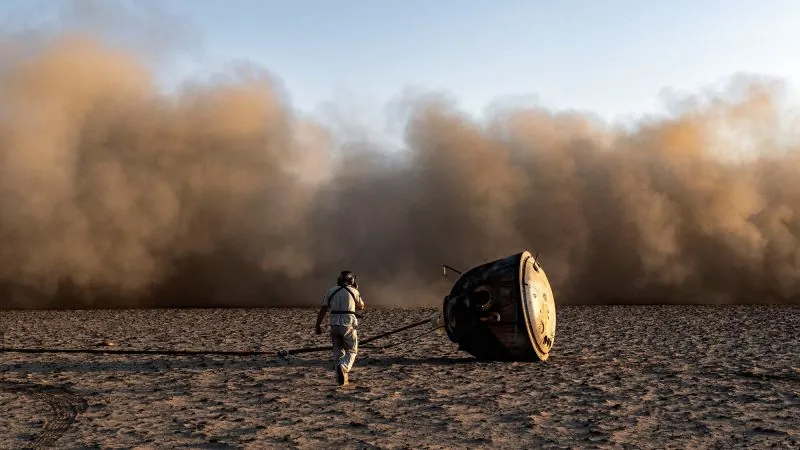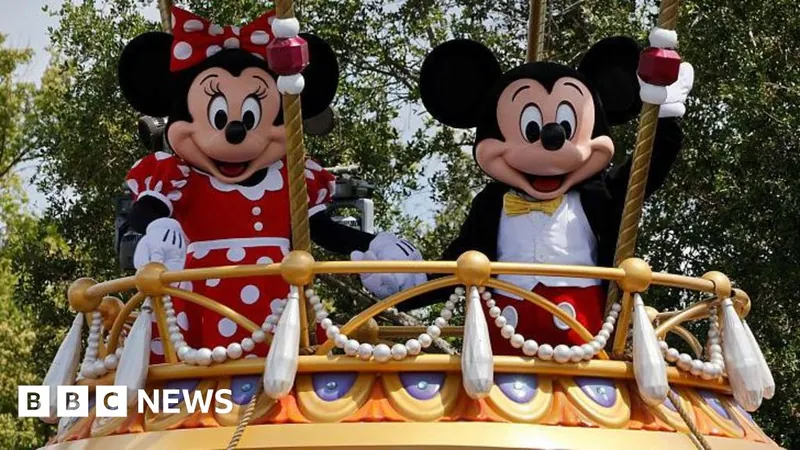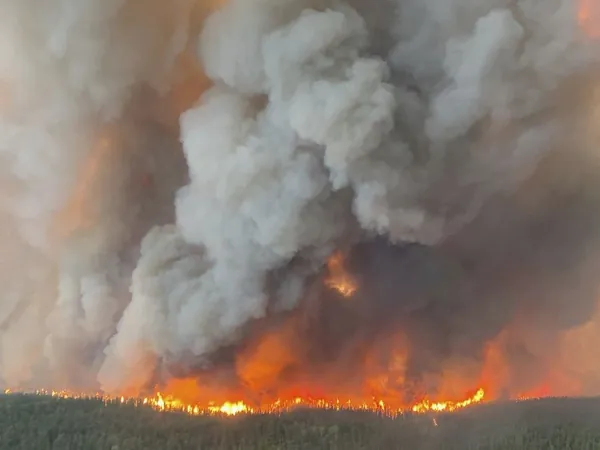
Journey to the Edge of Space: Andrew McConnell's Captivating Portraits of Kazakh Life and Space Returns
2024-12-30
Author: Olivia
Introduction
When we think of space travel, our minds often drift to dramatic launches—rocket engines igniting amidst choking smoke, flames roaring as they propel astronauts into the cosmos. However, famed photographer Andrew McConnell found himself captivated by the less glamorous but equally poignant aspect of space exploration: the unceremonious return of astronauts to Earth. His fascination was sparked by the sight of a Russian Soyuz spacecraft crash landing on the vast Kazakh Steppe a decade ago.
“It struck me how every three months, this capsule would land in the middle of nowhere, with hardly anyone to witness the event,” McConnell shared from his home in Northern Ireland. With the decommissioning of NASA's Space Shuttle program in 2011, Kazakhstan became the sole gateway to the International Space Station (ISS), heightening the importance of these landings.
Capturing Kazakh Life
In 2015, McConnell made his first of many trips to Kazakhstan, determined to encapsulate this remarkable human endeavor as well as the lives of the people who inhabit the land where these capsules return. “I wanted to portray something uplifting, a stark contrast to my usual work in conflict zones. Space travel felt like a positive human enterprise,” he explained.
The photographer quickly learned that despite the extraordinary nature of these landings, the local communities remained largely unaware of their global significance. Camping in the steppe, McConnell witnessed a remarkable confluence of two worlds when villagers from nearby settlements arrived, intrigued by the occurrence. “I had never considered that people lived there, right next to such monumental events,” he reflected.
The Photo Book: A Glimpse into Dual Lives
The resulting photo book, featuring renowned astronauts like Tim Peake and Kate Rubins, shifts focus to the Kazakh communities whose lives unknowingly mingle with the high-stakes world of space exploration. Vivid portraits of local nomads on horseback and everyday life in the village of Kenjebai-Samai depict this intersection. One particularly poignant image features a girl climbing on a makeshift fence constructed from space debris, a striking reminder of the delicate relationship between human endeavor and nature.
McConnell's exploration led him to observe how the modern astronaut parallels the nomadic lifestyle of the region’s inhabitants. “We have contemporary nomads—the astronauts—next to the traditional nomads, and that contrast speaks volumes about our varied existence on Earth,” he noted. The steppe itself emerges as a powerful protagonist in his work, a land teeming with the remnants of space travel and scars from coal mining.
A Blurred Reality
In capturing the otherworldly beauty of the landscape, McConnell often blurs the line between reality and science fiction. “Sometimes I struggled to identify the planet I was on,” he said, referring to images that evoke a sense of alien worlds. His book, titled "Some Worlds Have Two Suns,” invites readers into this ambiguity, enhancing the allure of both the Kazakh Steppe and the narratives it hosts.
Kazakhstan’s Role in Space Exploration
Kazakhstan has a rich history in space exploration, playing a pivotal role since the Soviet era. The Baikonur Cosmodrome, a launch site for humanity's first satellite Sputnik in 1957, continues to be central to Russia's space initiatives. Yet, as McConnell noted, this era may be waning. With advancing technologies and new players like SpaceX and Boeing entering the crew transportation landscape, the significance of Baikonur is evolving.
“Investment in space travel has shifted, and innovation has slowed down in Russia,” McConnell remarked, underscoring the changing dynamics of global space exploration. As new facilities arise and the industry transforms, the captivating stories of astronauts and local communities in Kazakhstan may echo as a bittersweet testament to an extraordinary chapter of space history.
Conclusion
As Andrew McConnell's photographs reveal, amidst the great strides made in space travel, it is the humble narratives and intersections of life on Earth that resonate most powerfully.









 Brasil (PT)
Brasil (PT)
 Canada (EN)
Canada (EN)
 Chile (ES)
Chile (ES)
 Česko (CS)
Česko (CS)
 대한민국 (KO)
대한민국 (KO)
 España (ES)
España (ES)
 France (FR)
France (FR)
 Hong Kong (EN)
Hong Kong (EN)
 Italia (IT)
Italia (IT)
 日本 (JA)
日本 (JA)
 Magyarország (HU)
Magyarország (HU)
 Norge (NO)
Norge (NO)
 Polska (PL)
Polska (PL)
 Schweiz (DE)
Schweiz (DE)
 Singapore (EN)
Singapore (EN)
 Sverige (SV)
Sverige (SV)
 Suomi (FI)
Suomi (FI)
 Türkiye (TR)
Türkiye (TR)
 الإمارات العربية المتحدة (AR)
الإمارات العربية المتحدة (AR)